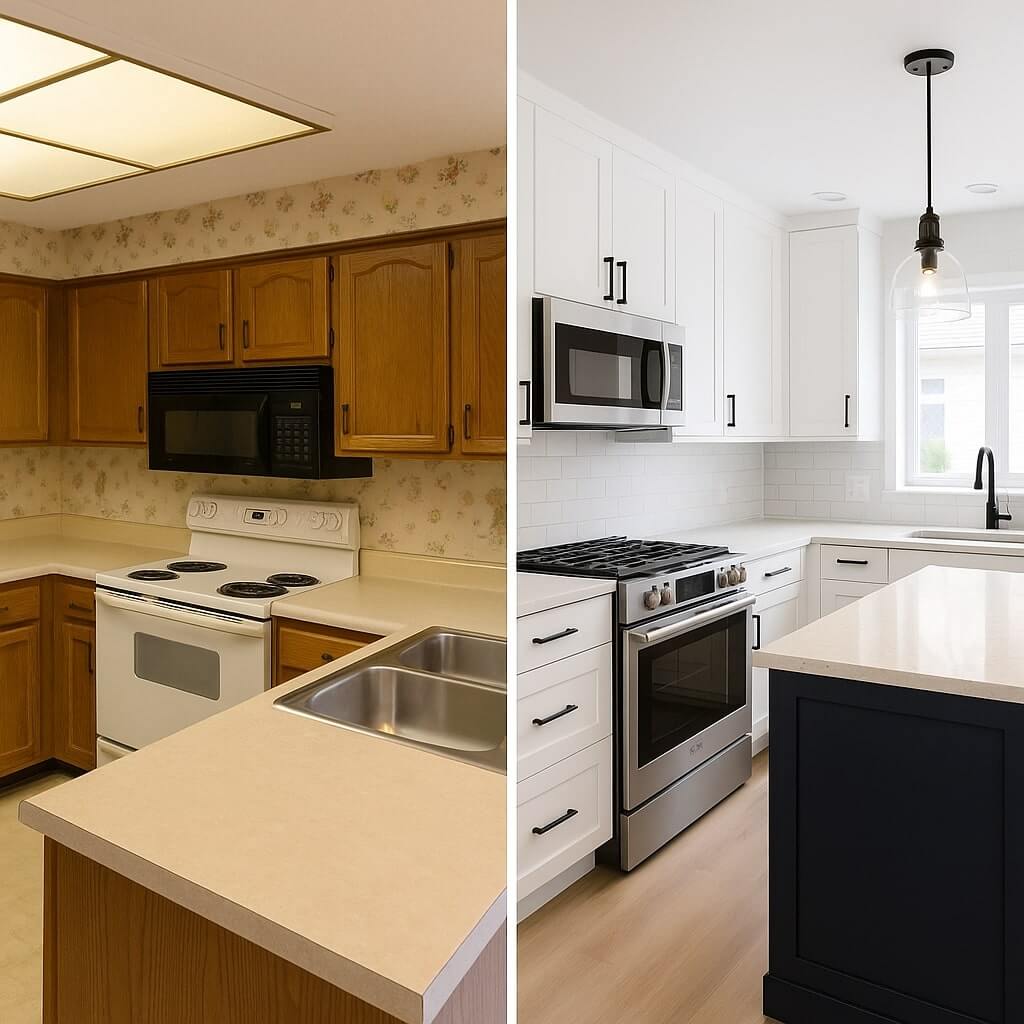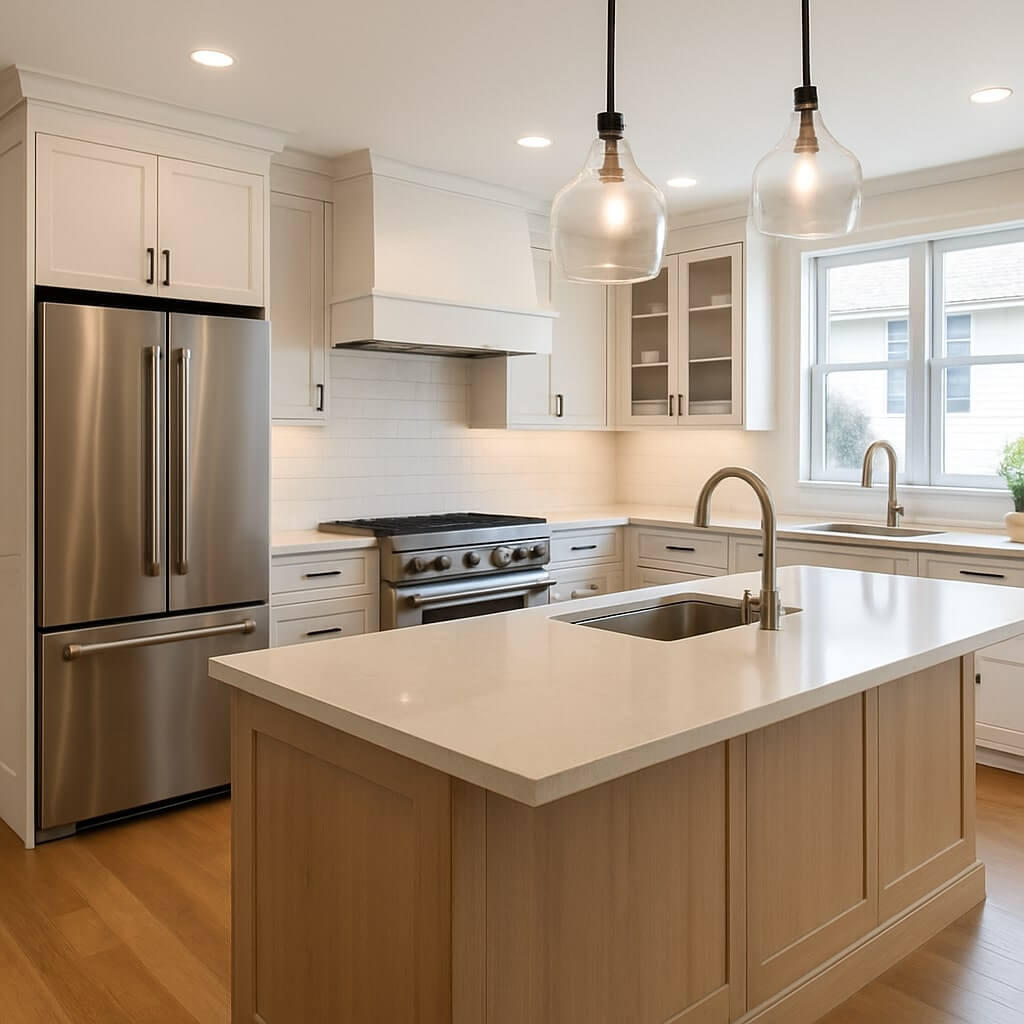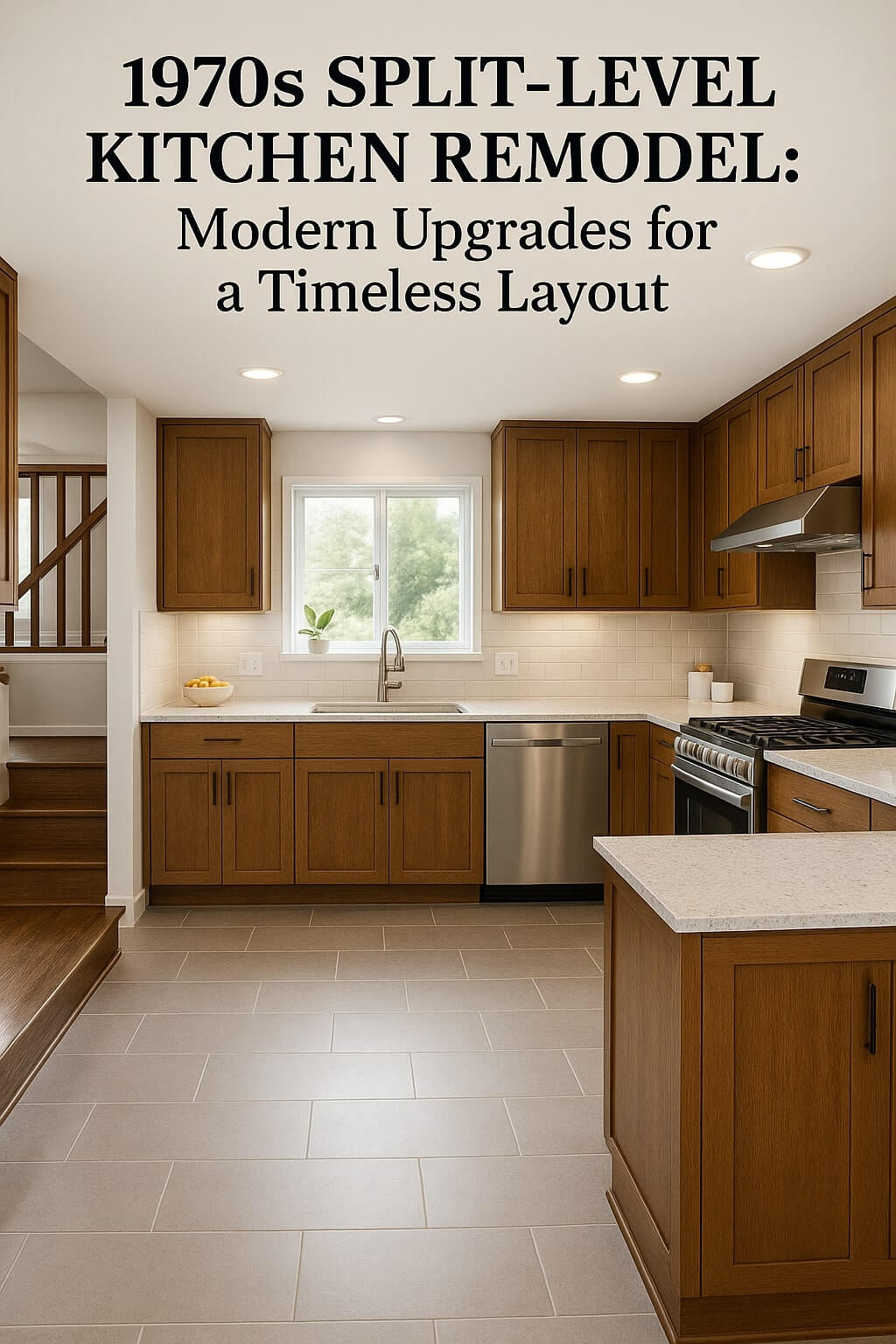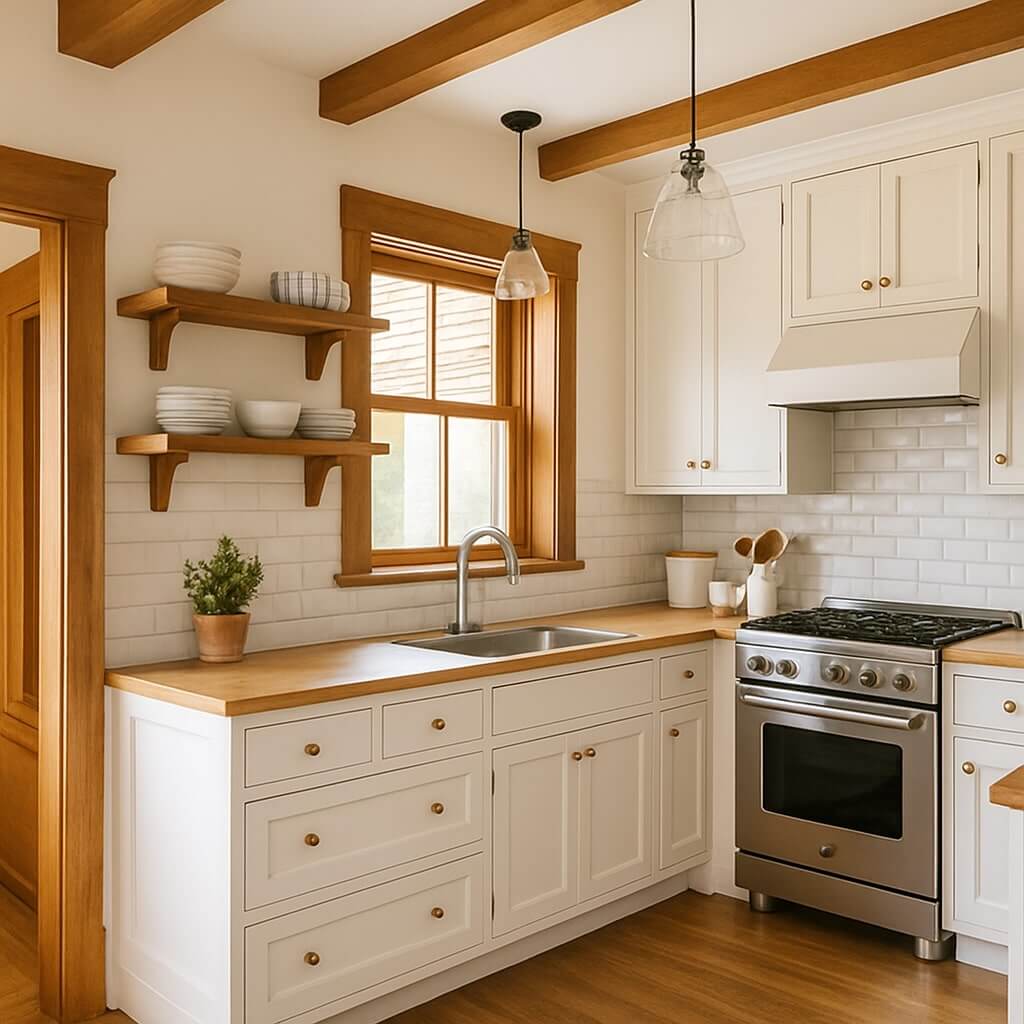The 1980s kitchen style is iconic, with its distinct design elements and bold choices. If you have an older kitchen stuck in that era, a remodel can breathe new life into the space while preserving its charm or transforming it into a modern masterpiece. This article explores inspiring 1980s kitchen remodel before and after transformations, tips on how to approach your renovation, and practical ideas to upgrade your kitchen for today’s lifestyle.
Understanding the 1980s Kitchen Style
Kitchens from the 1980s often featured:
- Oak cabinetry with raised panel doors
- Laminate countertops in neutral or pastel colors
- Pastel appliances or white appliances with brass accents
- Bold wallpaper or patterned linoleum flooring
- Fluorescent lighting fixtures with plastic diffusers
- Decorative trims and wallpaper borders
While charming, these features often look dated now. Remodeling gives homeowners the opportunity to update these elements while improving functionality and style.
Why Remodel a 1980s Kitchen?
Remodeling your 1980s kitchen offers several benefits:
- Modernize your space: Update outdated materials and finishes with current trends.
- Improve functionality: Enhance workflow and storage with smart layouts and cabinetry.
- Increase home value: Kitchens are a key selling point for buyers.
- Personalize design: Add your style while keeping or removing nostalgic touches.
- Energy efficiency: Upgrade to energy-saving appliances and lighting.
Inspiring 1980s Kitchen Remodel Before and After Transformations
1. From Dark Oak to Bright and Airy
Before: Dark oak cabinets, floral wallpaper, and brass hardware made the kitchen feel heavy and outdated. The fluorescent lighting was harsh.
After: The cabinets were painted a crisp white, with matte black hardware replacing brass. Walls were stripped of wallpaper and painted in a light gray. Recessed lighting and pendant lights replaced fluorescent fixtures. New quartz countertops and a subway tile backsplash brightened the space, making it feel open and modern.
2. Retro Revival with a Modern Twist
Before: Yellow laminate countertops, pastel-colored appliances, and linoleum floors characterized this 1980s kitchen.
After: The homeowners embraced the retro vibe but modernized it. They installed new retro-style appliances in stainless steel, replaced laminate with butcher block countertops, and laid wood-look tile flooring. The cabinetry was refinished in a soft mint green, complemented by brass hardware for a vintage yet contemporary feel.
3. Maximizing Space and Storage
Before: The original kitchen was cramped, with small cabinets and cluttered countertops.
After: A partial wall was removed to open the kitchen to the dining room. New custom cabinetry with pull-out drawers and built-in organizers maximized storage. The color palette switched to navy blue lower cabinets with white uppers, paired with marble countertops. Modern pendant lighting enhanced the space.
Key Tips for Remodeling a 1980s Kitchen
Evaluate Structural Changes
Decide if you want to change the kitchen layout for better flow. Open floor plans are popular today, so removing non-load-bearing walls can increase space.
Update Cabinetry
- Paint or refinish existing cabinets for a cost-effective update.
- Replace cabinet doors or the entire cabinetry for a fresh look.
- Consider shaker-style doors for a timeless appeal.
Replace Countertops
Materials like quartz, granite, or solid surface provide durability and modern aesthetics, moving away from dated laminates.
Upgrade Appliances
Choose energy-efficient, stainless steel appliances for performance and style.
Lighting Matters
Replace fluorescent tubes with layered lighting: recessed lights, under-cabinet lights, and statement pendants.
Flooring Options
Replace linoleum or dated tile with wood, wood-look tile, or modern ceramic tile for warmth and durability.
Add a Backsplash
Subway tile, mosaic glass, or patterned ceramic tiles can add texture and visual interest.
Frequently Asked Questions (FAQ)
Costs vary depending on scope, materials, and labor. On average, remodeling a kitchen can range from $15,000 to $50,000 or more. Painting cabinets and minor updates cost less, while full renovations with new cabinetry and appliances are on the higher end.
Absolutely! Many homeowners choose to preserve vintage charm by keeping or restoring cabinetry, incorporating retro appliances, or using classic color palettes with modern updates.
Painting them is a popular, affordable option. Choose light colors like white, gray, or pastel shades. Replace old hardware with modern knobs or handles for an instant refresh.
Many older kitchens were designed for different lifestyle needs and can feel cramped today. Open-concept layouts and more counter space are preferred now. Remodeling can improve workflow by reconfiguring the layout.
If the floor is in good condition, refinishing or updating with a modern overlay could work. However, replacing linoleum or dated tiles with durable wood-look options or ceramic tiles usually adds value and style.
Conclusion
A 1980s kitchen remodel before and after can transform an outdated space into a beautiful, functional kitchen that meets today’s needs while reflecting your personal style. Whether you opt for a full gut renovation or simply update cabinets and finishes, the possibilities are endless. Use the inspiring transformations and practical tips above to plan a kitchen remodel that revitalizes your home and enhances your daily life.




